The history of robots. The Guardians of the Buddha
The Oxford Dictionary gives a very concise definition of the word "robot" - an automaton that gives the impression of human work by its actions. Of course, the very concept of an artificial device that simulates the actions and, possibly, a person's appearance is quite old. It has been actively developed in many cultures and countries of the world, preserved to this day mainly in legends and legends. Ancient robots also appear in works of Eastern literature, for example, in Buddhist legends, which are set in India during the time of the real historical kings Ajatashatru and Ashoka.
According to legend, both rulers were assigned to protect the precious relics of the Buddha, whose death occurred somewhere between 483 and 400 BC. Indian legends are notable not only for the fact that they describe mechanical warriors protecting the remains of the Buddha but also for the fact that the stories clearly connect robots with automata invented in the Greco-Roman world. This interesting historical and geographical connection is explained by the active trade that existed between the fragments of the empire of Alexander the Great and the western states of the Hindustan Peninsula.
King Ajatashatru of the state of Magadhi (north-eastern India) ruled from about 492 to 462 BC in his fortified capital Pataliputra (the ruins of the city lie under modern Patna). According to Buddhist traditions, he met the Buddha and became his follower. After the death and cremation of the Buddha, Ajatashatru built a huge stupa over a deep underground chamber containing sacred ashes and bones. Then, as they say, Ajatashatru invented special structures to protect the relics of the Buddha. In traditional Hindu and Buddhist architecture, armed gatekeepers of the entrances to temples or treasuries (dvarapalas and yakshas) were depicted, sometimes they were statues in the form of a giant, sometimes demonic warriors.
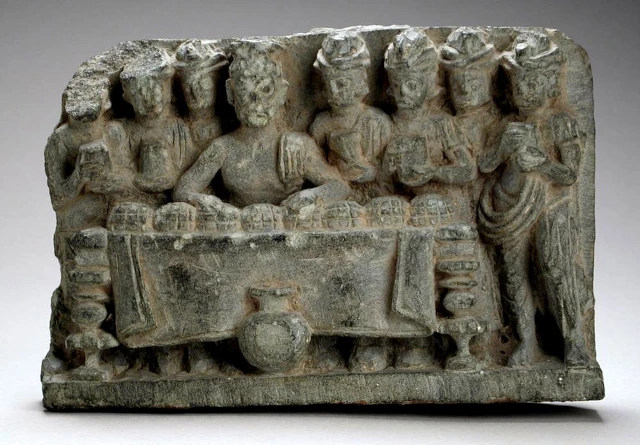
The Ancient Indian Robots Who Guarded Buddha’s Legendary Rel
The guards of Ajatashatru were extraordinary stone idols. The king ordered his engineers in Pataliputra to create a detachment of automaton warriors to protect the remains of the Buddha. It is worth mentioning that, according to ancient Jain texts, Ajatashatru deployed new military inventions: examples include the powerful catapult that threw massive boulders, and a mechanized heavy armored war chariot, something like a "tank" that wielded rotating maces or blades. It was also said that his automatic guards had rotating blades.
there was a prophecy according to which the sleepless automatic guards of Ajatashatru would be on duty until the future ruler, who would become King Ashoka, discovered and disabled the robots, then he would collect the sacred relics of the Buddha and distribute them among tens of thousands of shrines throughout his kingdom. King Ashoka (304-232 BC) ruled the powerful Maurya empire from about 273 to 232 BC in Pataliputra and became a follower of the Buddha. During his long reign, Ashoka built many stupas to preserve dozens of sacred relics of the Buddha throughout his vast kingdom, stretching from modern Afghanistan to Mysore, thus fulfilling the prophecy of Ajatashatru.
Legend has it:
In a Pali text from Burma called "Lokapannati, or Description of the World", dating back to the XI or XII centuries AD, we find amazing information stored in the people's memory for thousands of years. One of the stories tells how Ashoka discovered the relics of the Buddha, protected by mechanical devices.
The fairy tale tells that many Yantakars (creators of robots) lived in the country of Yavans (that is, people of the West) in the distant country of "Roma" (meaning not the Roman Empire, but the Greco-Roman culture as a whole). The secret technology of Yavan robots (literally: "machines that were the guides of spirits" or "mechanical beings animated by some kind of life force") was carefully guarded by those in power. It is also mentioned that in "Roma" robots are engaged in trade and agriculture, catch and execute criminals (parallels immediately arise with science fiction films like "I, Robot" or "Robocop"). None of the robot creators are allowed to leave the "Roma" or reveal the secrets of the skill, otherwise, the robot assassins will track them down and kill them.
Rumors about the legendary Roman robots reached India, inspiring a young artisan engineer who wanted to learn how to make automata. The young man lived in Pataliputra. As noted above, Pataliputra was a large fortified city built by King Ajatashatru around 490 BC. The city reached the peak of prosperity as the capital of King Ashoka in the middle of the third century BC.
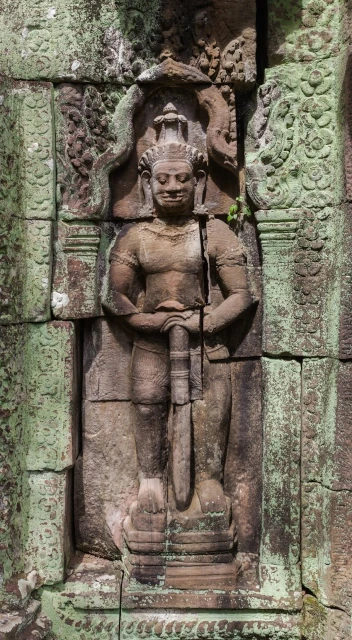
Dvarapala
The young man leaves his hometown and goes to Rome, where he marries the daughter of the chief mechanic and learns the secrets of creating automata. A son is born to him, from whom, however, he hides secret knowledge, but hatches a plan to bring secrets from the western country to his homeland. Then he steals the plans for creating robots, sews the instructions into his thigh, and goes to India. Knowing that he will be tracked down and executed by killer robots before he reaches his native country, the man tells his son to take his corpse back to Pataliputra. The son fulfills the last will of his father, learns about the plans and extracts the drawing from his father's thigh, and then begins to make automatons for King Ajatashatru from Pataliputra on his own. Ajatashatru used a collection of automatons armed with swords to protect the secret place where he kept the relics of the Buddha in the belly of the statue of the horse of the Buddha Kantaka.
But after the death of the king, the location of the relic sanctuary was lost. Later, the descendant of the king, the famous Ashoka, became aware of the prophecy that he would become a world ruler if he could find the relics of the Buddha's remains and build 84,000 stupas. Upon learning about this, Ashoka became desperate and publicly announced a reward to anyone who can find the location of the relics. Soon after, his servants returned with a 120-year-old woman who remembered the mound that she had worshipped in her youth with her mentor. Ashoka was brought to this mound, his people dug up the earth and found a number of roofs built under a round embankment, there was a beautiful temple covered with precious stones and surrounded by seven walls. It was guarded by a lot of machine guns that attacked everything that was within their reach. Ashoka was depressed again and thought about what to do.
He once again announced a reward to any person who can destroy or disassemble these machines. According to one legend, the son of the artisan who brought the technology from Rome was still alive, he volunteered and easily neutralized the androids. Ashoka entered the temple, approached the Kantaka statue, and when the king walked around it three times, the mechanical door in the statue opened, revealing a box in which the sacred relics of the Buddha shone like diamonds. According to another version, fierce battles are being fought between Ashoka and the automatic guards. Finally, Ashoka miraculously finds the engineer's son, who shows him how to dismantle and control Roman robots. And now King Ashoka himself commands a large army of robots.
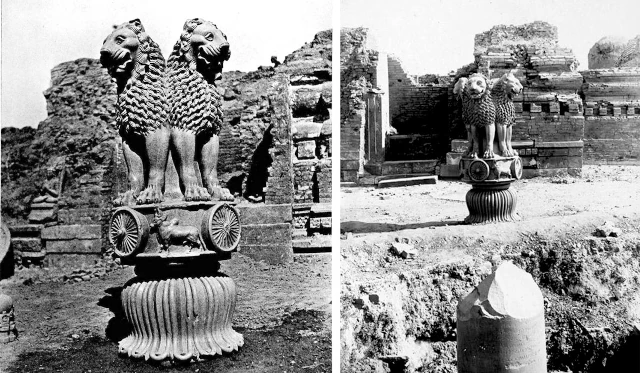
Over time, Ashoka became famous for finding the relics of the Buddha and building many stupas. Eventually, the stories of the events in Pataliputra reached the realm of "Rum/Rome" and the emperor learned that Ashoka had discovered relics protected by automatic weapons with swords. He asked his ministers how the secret technology for creating machines could have got to Pataliputra, and he was reminded of the artisan who tried to escape and whose body was returned to Pataliputra after his death. The emperor decided to punish Ashoka, his engineers developed an ingenious trap in the form of a metal chest with an automatic sword inside. The "gift" was sent to Pataliputra with ambassadors who announced that the chest was full of precious stones. Ashoka, curious, invited the son of the mechanicus who studied in Rome to have the old man examine the chest. After carefully studying the "gift", the master came to the conclusion that it was a trap and that there was an automaton inside the chest, sent to kill him. He informed Ashoka about this, but the king, under the influence of his ministers, was dissatisfied and ordered the master to open the chest. The old man, after saying goodbye to his family, unlocked the lock and opened the chest. As he predicted, an automaton appeared, cut off his head, and then miraculously flew back to Rome. Ashoka praised the artisan and blamed his ministers.
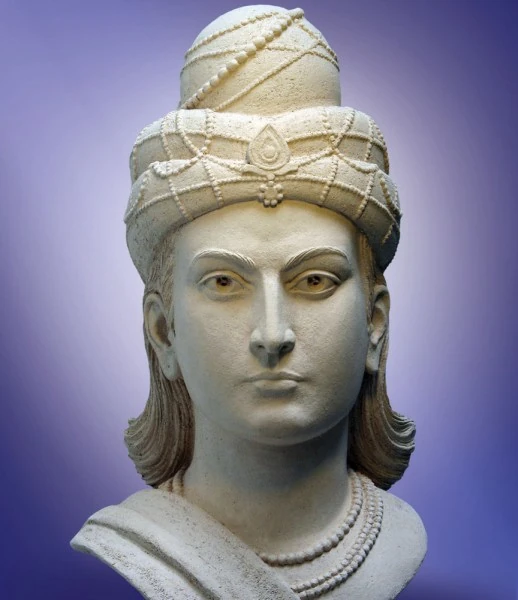
Ashoka
Other Buddhist and Hindu legends said that wooden androids that move with the speed of the wind and cut down uninvited guests with swords were created by a Hindu deity: Vishvakarman, the engineer god, the creator of the universe, or Indra, the god-king. In some versions of the legend, the guardian automata are driven by a water wheel or some other mechanism. In one fairy tale, the engineer-god Vishvakarman helps Ashoka by destroying robots, accurately hitting the bolts that hold the rotating structures together with arrows. The motif of the skillful incapacitation of mechanical guards recalls how the tech-scientist Medea destroyed the bronze robot Talos when he threatened to kill Jason and the Argonauts by removing the plugin his ankle.
Legends are legends, but we are interested in: did such technology actually exist, or are these all very interesting science fiction fables? The story clearly connects the mechanical beings protecting the relics of the Buddha with the advanced automatic inventions that originated in the Greco-Roman West. These narratives, as the researcher of the automatic devices of India of the Middle Ages, Daoud Ali, notes, seem to "encode, albeit indirectly, the real movement and circulation of the techne culture," including both real and imaginary contacts between India and the West. How ancient is this core of historical reality in the lost Sanskrit fairy tale included in the text of "Lokapannati"? Were the legendary guardian robots modeled based solely on knowledge and ideas about real automata created in the late Byzantine or medieval Islamic periods? Or is it possible that oral traditions about robot guards could have arisen even earlier, under the influence of Indian knowledge about real Hellenistic mechanical miracles, such as those created in Ptolemaic Alexandria in the III century BC, that is, in the time of Ashoka? Let's try to figure it out.
The historical setting of the legend points to the technological exchange of automata between the Mauryan emperors of India and the Hellenistic states that arose, as we have already noticed earlier, on the ruins of the empire of Alexander the Great. The evidence of history and archeology confirms the cultural contacts that took place from the V and IV centuries BC. We have information that around 300 BC, two Greek ambassadors, Megastenes and Deimachus, arrived at the Mauryan court and settled in Pataliputra, which, as we remember, was the hometown of an engineer who received plans to create robots from "Rum".
King Ashoka lived in the third century BC, at a time when automata and other devices were spreading in Alexandria and other centers of technology in the West. Throughout his kingdom, Ashoka left many written monuments, including rock inscriptions, some of which were written in ancient Greek, and others related to Hellenistic kings, testifying to the ongoing cultural exchange and trade with the West. Ashoka sent emissaries and corresponded with several Hellenistic rulers, including Ptolemy II Philadelphus in Alexandria, whose impressive procession in 279/278 BC showed the wonderful automatons created in the image of Dionysus and Nisa. Ashoka's envoys arrived in Alexandria, and Ptolemy II sent his own ambassador, a Greek named Dionysius, to Ashoka's court in Pataliputra.
Another evidence of a long-lasting cross-cultural influence is the diary "Fo guo ji" of the Chinese monk Fa Xian (IV-V centuries AD), one of the many Buddhist pilgrims who visited Pataliputra, the city of Ashoka, around 400 AD. Fa Xian witnessed the annual procession in honor of the Buddha, a tradition that supposedly began during the reign of Ashoka. The monk describes a magnificent parade of large four-wheeled carts carrying colossal structures, impressive replicas of stupas about 10 m high, a series of towering images of Buddha, bodhisattvas, and other divine beings made of gold, silver, and lapis lazuli, with bright silk banners and canopies, accompanied by hosts of singers, dancers, and musicians. Fa Xian does not mention mechanized statues, although there is a sense of deja vu, so much does the scene in Pataliputra resemble the grand procession of Ptolemy II Philadelphia in Alexandria, which took place in 279 BC, half a century ago.
About author:
Serg Toporkov Ufologist, Ph.D., blogger, I go on my own expeditions for UFOs. I use scientific methods to investigate the UAP phenomenon. Write to me |
Related tags:
Conspiracy theory conspiracy conspiracy theories conspiracy theory Buddha robots history Ajatashatru Ashoka Pataliputra alexandriaRandom UFO or conspiracy article
Round lakes - traces of a nuclear strike?
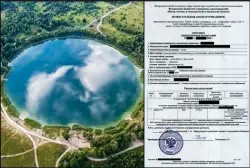 The official version says that the perfectly round lake is the result of a meteor strike. But is it so?
The official version says that the perfectly round lake is the result of a meteor strike. But is it so?
